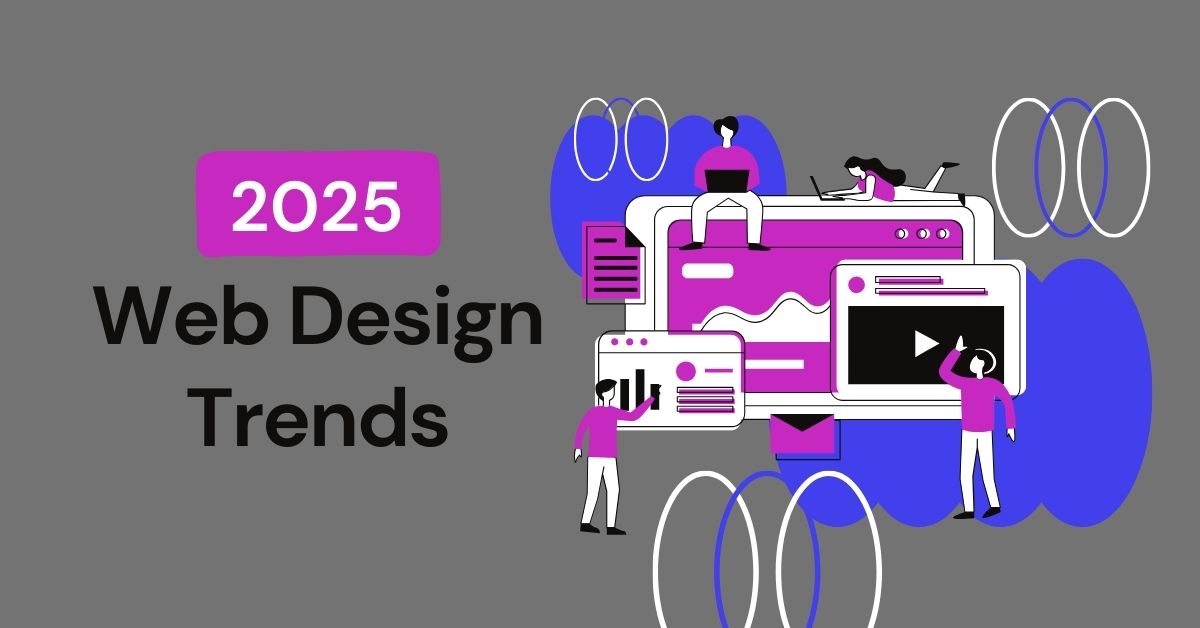Web Design Trends In 2025: Examples, Upcoming News and More
Sep 29, 2024 10822 seen
Introduction
I think we all try hard to keep up with new and always evolving trends, and sometimes it can be really hard. Everything improves very fast, and it feels like if you skip a day, you may miss an essential thing! Hades up, we are here to keep you aware of 2025 web design trends so your website can be one of the best.
Let’s dive into the most relevant 2025 web design trends.
1. AI-Powered Personalization
In 2025, artificial intelligence will continue to play an important role in web design. With AI advancements, websites will offer highly personalized user experiences, driven by data insights and user behavior. Imagine websites that adapt their layout, content, and recommendations based on the user's preferences in real time.
This level of customization will be achieved through AI-powered tools that analyze browsing patterns, predict user needs, and present content dynamically.
2. 3D and Immersive Visuals
3D elements, which have been gaining popularity in recent years, will become a core part of web design in 2025. Improved browser capabilities and faster internet speeds will allow designers to incorporate high-quality 3D graphics, animations, and even virtual reality elements without sacrificing performance.
3. Neomorphism 2.0
Neomorphism, a style that combines flat design and skeuomorphism to create a soft, extruded plastic-like appearance, will evolve in 2025. Neomorphism 2.0 will be more user-friendly and accessible, with improved contrast and usability enhancements. This design style will be particularly effective for creating intuitive interfaces, and making buttons, cards, and input fields look more tactile and interactive.
4. Voice User Interfaces (VUIs) Integration
With the proliferation of smart devices and voice assistants, Voice User Interfaces (VUIs) will be a significant trend in web design. By 2025, it’s expected that many websites will incorporate voice navigation as a standard feature. Users will be able to search, navigate, and even purchase through voice commands, making websites more accessible and enhancing the user experience for differently-abled individuals.
5. Sustainability-Centric Design
The global push for sustainability will heavily influence web design trends in 2025. Users are increasingly conscious of the environmental impact of digital products, prompting the need for more sustainable web design practices. This trend will be reflected in energy-efficient coding practices, optimized media files, and server usage that minimize the carbon footprint.
6. Micro-Interactions and Micro-Animations
Micro-interactions and micro-animations are subtle yet powerful design elements that guide users through a website and create a delightful browsing experience. In 2025, expect to see these elements take center stage, offering feedback, transitions, and notifications in creative ways. When done right, these tiny animations breathe life into static pages, making websites more engaging and interactive.
7. Data Visualization and Infographics
With the increased focus on content-driven design, data visualization will be a critical trend in 2025. Interactive charts, infographics, and visual data representations will become a popular way to present complex information in a digestible format. This trend is particularly relevant for websites in finance, healthcare, and technology industries, where large data sets need to be communicated clearly.
8. Asymmetrical Layouts and Overlapping Elements
Symmetry has long dominated web design, but 2025 will see a shift toward asymmetrical layouts and overlapping elements to create more dynamic and visually interesting compositions. Designers will experiment with broken grid layouts, layering text and images, and using overlapping visuals to lead the user’s eye through the content. This approach challenges traditional design rules and creates a sense of modernity and unpredictability.
9. AI-Powered Code Generators and No-Code Platforms
With the rise of no-code and low-code platforms, building complex websites without extensive coding knowledge will become mainstream in 2025. AI-powered tools that automatically generate code or enable drag-and-drop design will empower designers and business owners to create sophisticated websites in less time. This democratization of web design will allow more people to experiment with advanced design elements, pushing the creative boundaries even further.


